Growing Cilantro Tips: Unlock the secrets to a bountiful harvest right in your backyard! Have you ever dreamed of snipping fresh, fragrant cilantro straight from your garden to elevate your favorite dishes? I know I have! But let’s be honest, sometimes that dream turns into a frustrating reality of leggy, bolting plants and disappointing yields. Don’t worry, you’re not alone!
Cilantro, also known as coriander in some parts of the world, has a rich history dating back thousands of years. Ancient Egyptians used it for medicinal purposes, and it’s been a staple in cuisines across Asia, Latin America, and the Mediterranean for centuries. Its vibrant flavor adds a unique zest to everything from salsas and tacos to curries and soups.
But why is growing cilantro so tricky? Well, this herb is a bit of a diva! It’s sensitive to temperature fluctuations and has a tendency to bolt (go to seed) quickly, especially in hot weather. That’s where these DIY tricks and hacks come in. I’m going to share my tried-and-true methods for successfully growing cilantro tips, ensuring you have a continuous supply of this flavorful herb throughout the growing season. Say goodbye to expensive, wilted bunches from the grocery store and hello to fresh, homegrown goodness!
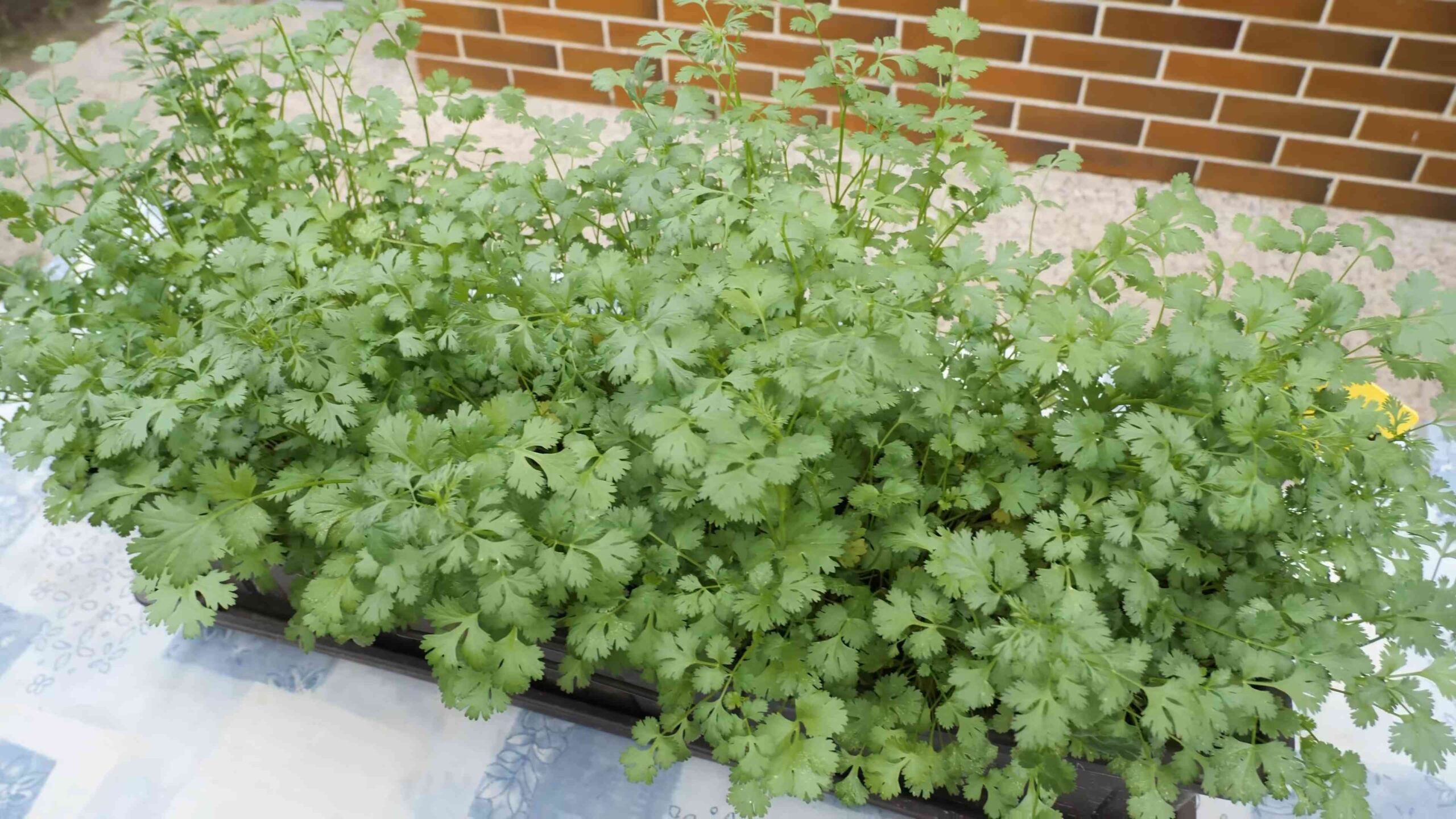
Growing Cilantro Like a Pro: From Seed to Salsa!
Okay, cilantro lovers, let’s get real. Growing cilantro can be a bit… temperamental. It bolts (goes to seed) faster than you can say “guacamole,” and sometimes it just seems to give up on life. But fear not! I’m going to share all my secrets for keeping your cilantro happy, healthy, and producing those delicious leaves for as long as possible. Get ready to have cilantro coming out of your ears (almost!).
Choosing the Right Cilantro Variety
Not all cilantro is created equal! Some varieties are more bolt-resistant than others. Here’s what I recommend:
* Slow-bolt varieties: Look for names like ‘Slow Bolt’, ‘Long Standing’, or ‘Santo’. These are specifically bred to resist bolting, giving you a longer harvest window.
* Consider your climate: If you live in a hot climate, definitely prioritize slow-bolt varieties. If you have cooler summers, you might have more luck with other types.
* Organic seeds: I always prefer organic seeds to avoid any unwanted chemicals.
Getting Started: Planting Your Cilantro
Cilantro is best grown directly from seed. It doesn’t transplant well, so starting it indoors is usually more trouble than it’s worth.
1. Timing is everything: Cilantro thrives in cooler weather. Plant seeds in early spring or early fall. In hot climates, you might even be able to grow it during the winter. Avoid planting during the hottest months of summer. I usually aim for planting when daytime temperatures are consistently below 75°F (24°C).
2. Choose your location: Cilantro needs at least 4-6 hours of sunlight per day, but it also appreciates some afternoon shade, especially in hotter climates. A spot with morning sun and afternoon shade is ideal.
3. Prepare the soil: Cilantro prefers well-drained soil that is rich in organic matter. Amend your soil with compost or well-rotted manure before planting. This will provide essential nutrients and improve drainage.
4. Sow the seeds: Cilantro seeds have a hard outer shell, so soaking them in water for 24 hours before planting can help speed up germination. Sow the seeds about ¼ inch deep and 1 inch apart. You can also broadcast the seeds and then thin them later.
5. Water gently: Keep the soil consistently moist, but not waterlogged. Use a gentle watering can or a hose with a spray nozzle to avoid disturbing the seeds.
6. Be patient: Cilantro seeds can take 7-21 days to germinate, depending on the temperature. Don’t give up if you don’t see sprouts right away!
Cilantro in Containers: A Great Option!
Growing cilantro in containers is a fantastic way to control the growing environment and move your plants to shadier spots during hot weather.
1. Choose the right container: Select a container that is at least 6 inches deep and wide. Make sure it has drainage holes to prevent waterlogging.
2. Use a good potting mix: Use a high-quality potting mix that is well-draining and contains plenty of organic matter. Avoid using garden soil, as it can compact and prevent proper drainage.
3. Planting: Follow the same planting instructions as for growing cilantro in the ground. Sow the seeds about ¼ inch deep and 1 inch apart.
4. Watering: Container-grown cilantro will need to be watered more frequently than cilantro grown in the ground. Check the soil moisture regularly and water when the top inch of soil feels dry.
5. Fertilizing: Feed your container-grown cilantro with a balanced liquid fertilizer every 2-3 weeks.
6. Sunlight: Place the container in a location that receives at least 4-6 hours of sunlight per day, but provide some afternoon shade during hot weather.
Watering and Feeding Your Cilantro
Proper watering and feeding are crucial for keeping your cilantro healthy and productive.
1. Watering: Cilantro needs consistent moisture, but it doesn’t like to be waterlogged. Water deeply whenever the top inch of soil feels dry. Avoid overhead watering, as this can promote fungal diseases.
2. Fertilizing: Cilantro is a light feeder, so you don’t need to fertilize it heavily. A balanced liquid fertilizer applied every 4-6 weeks is usually sufficient. You can also amend the soil with compost or well-rotted manure at planting time.
3. Mulching: Applying a layer of mulch around your cilantro plants can help retain moisture, suppress weeds, and regulate soil temperature. Use organic mulches like straw, shredded leaves, or wood chips.
Preventing Bolting: The Key to Cilantro Success
Bolting is the biggest challenge when growing cilantro. Here’s how to prevent it:
1. Choose slow-bolt varieties: As mentioned earlier, selecting bolt-resistant varieties is the first step.
2. Plant at the right time: Avoid planting during the hottest months of summer.
3. Provide shade: Cilantro appreciates some afternoon shade, especially in hot climates. You can use shade cloth or plant it near taller plants that will provide some protection from the sun.
4. Water regularly: Consistent moisture helps prevent bolting.
5. Pinch off flower buds: As soon as you see flower buds forming, pinch them off. This will encourage the plant to produce more leaves.
6. Succession planting: Plant new cilantro seeds every 2-3 weeks to ensure a continuous supply of fresh leaves. This is especially important in hot climates.
Dealing with Pests and Diseases
Cilantro is generally pest-resistant, but it can be susceptible to a few problems.
1. Aphids: Aphids are small, sap-sucking insects that can weaken your cilantro plants. You can control aphids by spraying them with a strong stream of water or by using insecticidal soap.
2. Whiteflies: Whiteflies are tiny, white insects that feed on plant sap. They can be controlled with insecticidal soap or by introducing beneficial insects like ladybugs.
3. Fungal diseases: Cilantro can be susceptible to fungal diseases like powdery mildew and downy mildew, especially in humid conditions. Prevent fungal diseases by providing good air circulation, avoiding overhead watering, and applying a fungicide if necessary.
4. Root rot: Root rot is a fungal disease that can occur in waterlogged soil. Prevent root rot by ensuring that your soil is well-draining and by avoiding overwatering.
Harvesting Your Cilantro
Harvesting cilantro regularly encourages the plant to produce more leaves.
1. When to harvest: You can start harvesting cilantro leaves when the plants are about 6 inches tall.
2. How to harvest: Cut the outer leaves of the plant, leaving the inner leaves to continue growing. Avoid cutting more than one-third of the plant at a time.
3. Harvesting flowers: If your cilantro does bolt, don’t despair! The flowers are also edible and have a mild cilantro flavor. You can use them in salads or as a garnish.
4. Harvesting seeds: Once the flowers dry out, they will produce seeds (coriander). You can harvest the seeds and use them as a spice. Let the seed heads dry completely on the plant before harvesting.
Extending Your Cilantro Harvest
Want to keep your cilantro producing for as long as possible? Here are a few tips:
1. Succession planting: As mentioned earlier, planting new cilantro seeds every 2-3 weeks is the best way to ensure a continuous supply of fresh leaves.
2. Pinch off flower buds: Regularly pinching off flower buds will encourage the plant to produce more leaves.
3. Provide shade: Cilantro appreciates some afternoon shade, especially in hot climates.
4. Water regularly: Consistent moisture helps prevent bolting.
5. Consider overwintering: In mild climates, you may be able to overwinter your cilantro plants by protecting them from frost. Cover the plants with a layer of mulch or move them to a sheltered location.
Preserving Your Cilantro
If you have more cilantro than you can use, here are a few ways to preserve it:
1. Freezing: Chop the cilantro and freeze it in ice cube trays with water or olive oil. Once frozen, transfer the cubes to a freezer bag.
2. Drying: Dry the cilantro in a dehydrator or in a low oven. Dried cilantro loses some of its flavor, but it can still be used in soups and stews.
3. Making cilantro pesto: Cilantro pesto is a delicious way to preserve your cilantro. Blend the cilantro with garlic, nuts, cheese, and olive oil. Freeze the pesto in small portions.
Troubleshooting Common Cilantro Problems
Even with the best care, you might encounter some problems when growing cilantro. Here’s how to troubleshoot them:
*
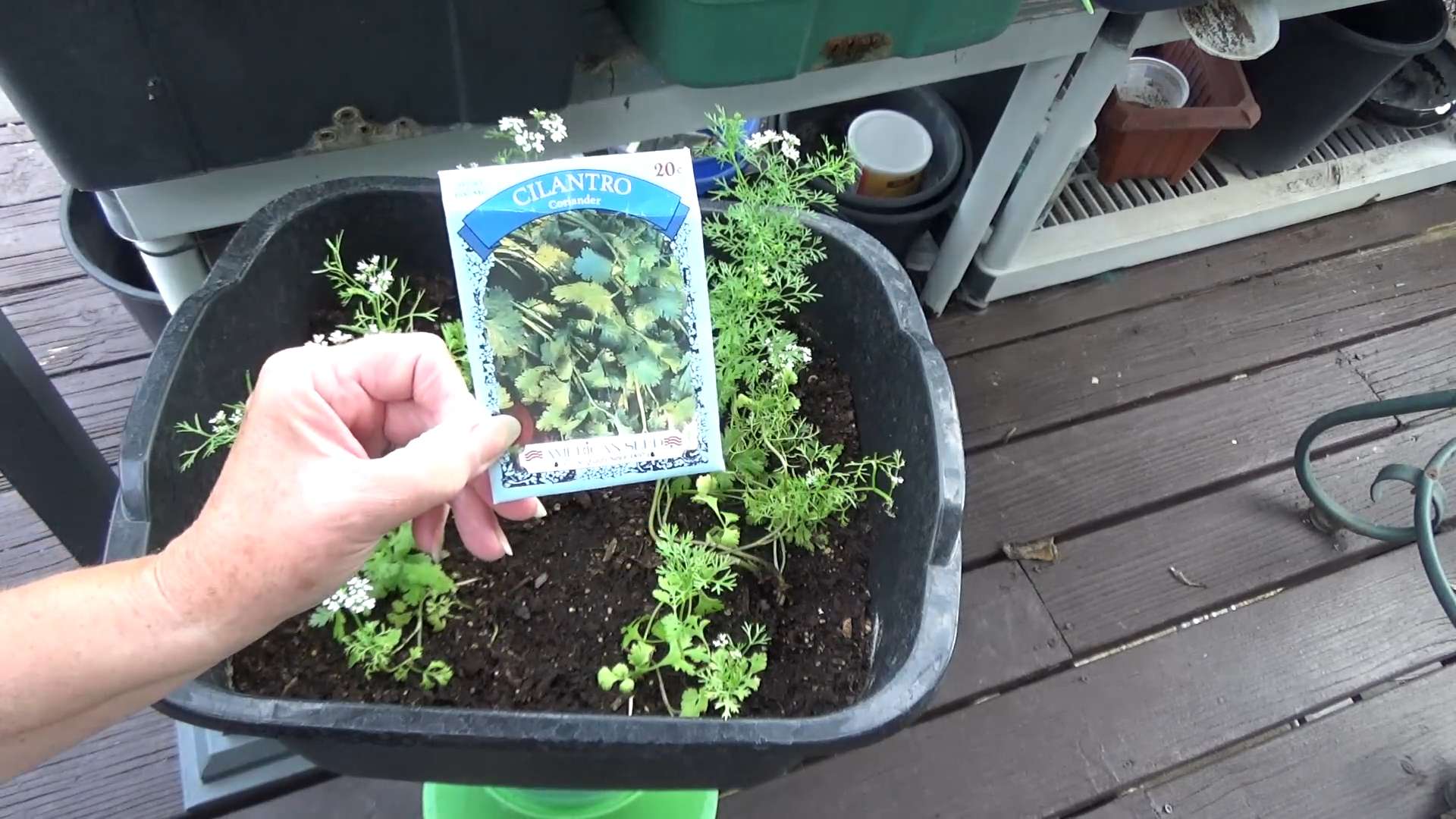
Conclusion
So, there you have it! Mastering the art of growing cilantro at home is not only achievable but also incredibly rewarding. We’ve walked you through the essential steps, from selecting the right seeds and preparing the soil to providing the ideal environment and harvesting your bounty. But why is this DIY trick a must-try?
Firstly, consider the unparalleled freshness. Store-bought cilantro, even when fresh, can’t compare to the vibrant flavor and aroma of homegrown herbs. Imagine snipping off a handful of leaves just moments before adding them to your favorite salsa, tacos, or Asian-inspired dishes. The difference is truly remarkable.
Secondly, think about the cost savings. Packets of cilantro at the grocery store can be surprisingly expensive, especially if you use it frequently. By growing your own, you’ll have a constant supply at your fingertips, significantly reducing your grocery bill.
Thirdly, and perhaps most importantly, growing cilantro is a deeply satisfying experience. There’s something incredibly fulfilling about nurturing a plant from seed to harvest, witnessing its growth, and enjoying the fruits (or, in this case, the leaves) of your labor. It’s a connection to nature that can be incredibly grounding and therapeutic.
But the journey doesn’t end here! Feel free to experiment with different varieties of cilantro. Some are more heat-tolerant than others, so research which ones are best suited for your climate. You can also try growing cilantro in different containers or even in a raised garden bed. Consider companion planting – cilantro thrives alongside carrots, onions, and lettuce, creating a mutually beneficial ecosystem in your garden.
For those who struggle with cilantro bolting (going to seed prematurely), try succession planting. Sow a small batch of seeds every few weeks to ensure a continuous supply of fresh leaves. You can also try providing shade during the hottest part of the day to prevent bolting.
Don’t be afraid to get creative with your cilantro harvest. Beyond the usual culinary applications, try adding it to smoothies, salads, or even infused oils and vinegars. The possibilities are endless!
We wholeheartedly encourage you to embark on this exciting adventure of growing cilantro at home. It’s a simple, affordable, and incredibly rewarding way to elevate your cooking and connect with nature. Once you’ve experienced the joy of harvesting your own fresh cilantro, you’ll never want to go back to store-bought again.
And most importantly, we want to hear about your experiences! Share your tips, tricks, and triumphs in the comments below. Let us know what worked for you, what challenges you faced, and what delicious dishes you created with your homegrown cilantro. Your insights will help other aspiring gardeners on their own cilantro-growing journeys. Let’s build a community of cilantro enthusiasts!
Frequently Asked Questions (FAQ)
What is the best time of year to plant cilantro?
The best time to plant cilantro depends on your climate. In cooler climates, you can plant cilantro in early spring after the last frost. In warmer climates, you can plant cilantro in the fall or early winter for a winter harvest. Avoid planting cilantro during the hottest months of summer, as it tends to bolt (go to seed) quickly in high temperatures. Succession planting, sowing seeds every few weeks, is a great strategy to ensure a continuous harvest.
How much sunlight does cilantro need?
Cilantro needs at least 6 hours of sunlight per day to thrive. However, in hotter climates, providing some afternoon shade can help prevent bolting. If you’re growing cilantro indoors, place it near a sunny window or use a grow light.
What kind of soil is best for growing cilantro?
Cilantro prefers well-draining soil that is rich in organic matter. Amend your soil with compost or other organic materials before planting. A slightly acidic to neutral soil pH (around 6.0 to 7.0) is ideal.
How often should I water cilantro?
Keep the soil consistently moist, but not waterlogged. Water deeply when the top inch of soil feels dry to the touch. Avoid overhead watering, as this can lead to fungal diseases. Mulching around the plants can help retain moisture and suppress weeds.
Why is my cilantro bolting (going to seed)?
Bolting is a common problem with cilantro, especially in hot weather. Several factors can contribute to bolting, including high temperatures, lack of water, and nutrient deficiencies. To prevent bolting, try providing shade during the hottest part of the day, watering regularly, and fertilizing with a balanced fertilizer. Succession planting is also a great way to ensure a continuous supply of fresh leaves, even if some plants bolt.
How do I harvest cilantro?
You can start harvesting cilantro leaves when the plants are about 6 inches tall. Snip off the outer leaves, leaving the inner leaves to continue growing. Avoid harvesting more than one-third of the plant at a time. If your cilantro starts to bolt, you can still harvest the seeds (coriander) for use as a spice.
Can I grow cilantro indoors?
Yes, you can grow cilantro indoors, but it requires adequate sunlight or a grow light. Choose a pot that is at least 6 inches deep and wide. Use well-draining potting mix and water regularly. Place the pot near a sunny window or under a grow light for at least 6 hours per day.
What are some common pests and diseases that affect cilantro?
Cilantro can be susceptible to aphids, spider mites, and fungal diseases. To prevent pests and diseases, keep your plants healthy by providing adequate sunlight, water, and nutrients. Inspect your plants regularly for signs of infestation or disease. If you find pests, you can try spraying them with insecticidal soap or neem oil. For fungal diseases, improve air circulation and avoid overhead watering.
Can I save cilantro seeds for future planting?
Yes, you can save cilantro seeds (coriander) for future planting. Allow the seed heads to dry completely on the plant. Once they are dry, cut them off and store them in a cool, dry place. You can then plant the seeds the following season.
What are some creative ways to use homegrown cilantro?
Beyond the usual culinary applications, try adding cilantro to smoothies, salads, or even infused oils and vinegars. You can also use it to make pesto, chimichurri, or other flavorful sauces. Cilantro pairs well with a variety of cuisines, including Mexican, Asian, and Indian. Experiment and discover your own favorite ways to use this versatile herb.


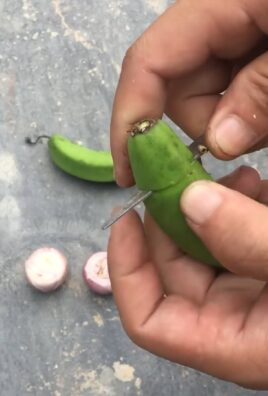
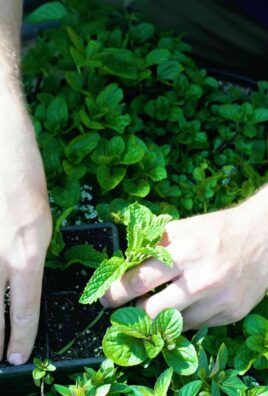
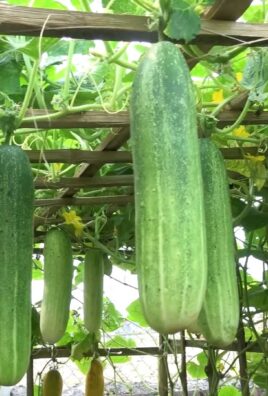
Leave a Comment